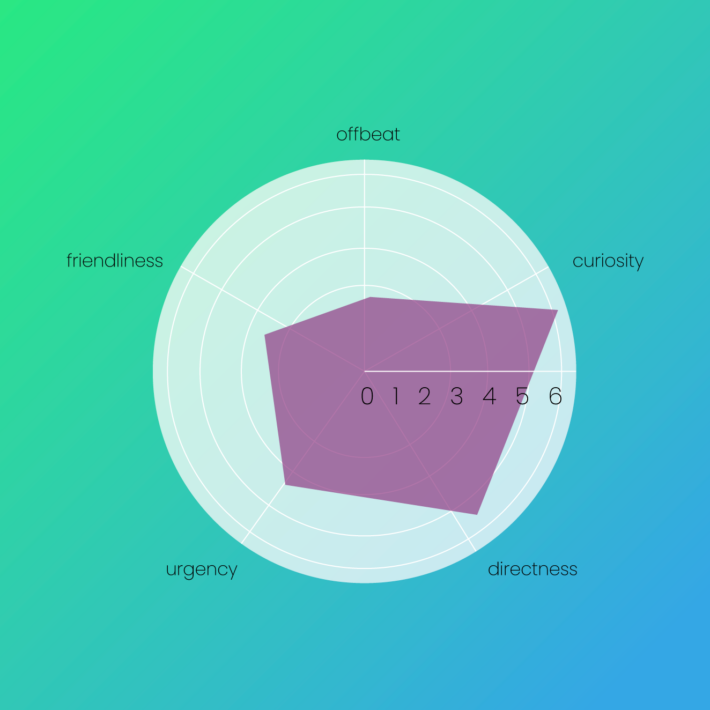Content Optimization Means More Than Just Content Variation
When it comes to running A/B tests for emails, ads, and other marketing materials, marketers have always needed to embrace the power of content variation.
- August 25, 2023
By The Phrasee Team

Now that generative AI has exploded into the mainstream, creating variations of content has never been easier. The ‘blank page’ problem is no more.
When it comes to running A/B tests for emails, ads, and other marketing materials, marketers have always needed to embrace the power of content variation.
Sounds like a perfect marriage between marketers and generative AI, right?
Well, let’s not get too far ahead of ourselves yet.
In order to optimize and refine campaigns, it’s crucial to test different versions of content and analyze their performance. Nothing revolutionary there, we know.
By creating multiple variations, marketers can experiment with different headlines, copy, visuals, calls-to-action, and other elements to determine what resonates best with their target audience.
And with generative AI tools like ChatGPT, you can click a button and as much content as you can handle can be created. But is what you created good?
And good can mean a few things:
- Is it factually accurate? Has it manufactured facts? Is it trustworthy? That’s important.
- Does it have the intent which you want it to? If you’re saying you want it to jump, does it just sit down?
- Is it on brand? Does it adhere to your style, to your tone of voice? Does it do all these things that you’ve spent so much time and effort building up?
And at first glance, what generative AI tools produce can meet these criteria and look really cool and you can pat yourself on the back for using a good prompt.
But let’s ask the question that matters most of all when it comes to marketing content:
Does it perform?
Does it actually make people take the action you want them to take?
Because that’s the whole purpose of language within the marketing realm. Now, this is a big problem because you can go into any AI and you can click the button and you can create something. And it’s coherent.
But just because it reads like a human doesn’t mean it’s good. And it certainly doesn’t mean it performs.
The factors of performance
Many factors contribute to content performance. One important factor is language diversity.
By that, we mean the use of different combinations of different linguistic features such as emoji use, words/phrases, sentiments, semantics, and syntactic structure.
There is a positive correlation between language diversity and performance. On average, brands that experiment with diverse language in their subject lines enjoy an open rate uplift of 10% and a click rate uplift of 16%.
But there is no one formula for the perfect subject line. There are millions of ways to write a subject line.
To find out what resonates best with your audience, you need to leverage a wide range of different linguistic features to be tested in different combinations. Looking at individual linguistic variables in isolation (e.g., length or emojis) does not tend to find a correlation with performance.
Humans are not good at writing linguistically diverse marketing messages at scale.
With cognitive bias, risk-aversion, and preconceived notions about what will and won’t work, most of us will instinctively lean on language which has performed well in the past, things that sound good to our own ear, or what others have used.
And if we can’t remove bias in the content we create ourselves, we certainly can’t remove it from the content that we lean on generative AI to produce.
Harnessing generative AI for marketing
Now that creation has been democratized and you can create a whole bunch of stuff without effort, you need to then determine what is good and what is bad. And the only repeatable way of doing this is to use a data-driven model.
Phrasee’s proprietary AI content generation technology exceeds what publicly available large language models (LLMs) can produce on their own. Where tools like ChatGPT can produce content with a click that sounds human, Phrasee informs that content with our Deep Learning model, trained on nearly a decade of content experiments taking the guesswork out of knowing what makes your audiences want to engage with your content.
When it comes to performance, it’s no good just to create more content.
Countless variations may sound like the path to optimization, but truly great testing comes from language diversity.
—
Don’t forget to check out the full ebook: Is the Future of Generative AI Quality or Quantity?


